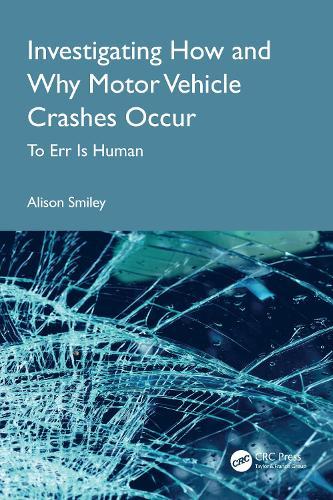Overview
Decades of research reveal that human error is a significant contributor to vehicle crashes, accounting for over 90 % of incidents. Humans possess inherent physical, visual, and cognitive limitations that can lead to accidents on the road. This book draws on the author’s 35 years of experience investigating approximately 500 motor vehicle crashes to explore these limitations and their role in causing accidents. In this title, ten specific crashes, each illustrating how human limitations contribute to accidents, are presented and analyzed. Technical solutions such as automated emergency braking are offered for each crash type. From passenger car drivers to pedestrians, motorcyclists to truck drivers, each chapter investigates the unique circumstances and human factors at play. In each case, the interdisciplinary science of human factors that applies is explained, covering issues such as visibility with low beam headlights, glare, fatigue, information processing demands, and false expectations. Including a final chapter on the author’s experiences acting as a human factors expert witness in court, this book delivers to the reader a vital overview of human error in vehicle accidents. Investigating How and Why Motor Vehicle Crashes Occur: To Err Is Human is an essential read for practitioners of human factors and ergonomics, occupational health and safety, automotive engineering, civil engineering, road and transport design, collision investigation and the law.
Full Product Details
Author: Alison Smiley
Publisher: Taylor & Francis Ltd
Imprint: CRC Press
ISBN: 9781032912479
ISBN 10: 1032912472
Pages: 156
Publication Date: 28 November 2025
Audience:
Professional and scholarly
,
Professional & Vocational
Format: Paperback
Publisher's Status: Forthcoming
Availability: Not yet available

This item is yet to be released. You can pre-order this item and we will dispatch it to you upon its release.
Reviews
Presents fascinating stories of how everyday human limitations and errors can result in catastrophic events on the road Highlights the science behind human errors and limits explained in an accessible manner Features case studies of actual crashes, including detailed investigation and analysis into the key components of each Delivers insights into the experience of an expert witness giving evidence in court Examines countermeasures to prevent the type of crash analysed in the case study
Author Information
Dr. Alison Smiley served as president (1984-2021) and principal consultant of HFN Inc. in Toronto, Canada, holding a PhD (1978) in Systems Design Engineering with a Human Factors specialization. As the founding Chair of the Canadian College for the Certification of Professional Ergonomists (CCCPE), she brings 40 years of expertise in measuring driver performance affected by sign design, distraction, fatigue, drugs, and headlight design. Dr. Smiley has taught human factors courses to traffic engineers, highway designers, university students, and accident reconstructionists throughout Canada and the United States, while contributing to various manuals and books, including the Ontario Traffic Manual and the Geometric Design Guide for Canadian Roads. Her extensive experience includes conducting investigations and writing reports for over 500 legal cases involving motor vehicle crashes, and she has provided expert testimony in court more than 20 times across both Canada and the United States.



